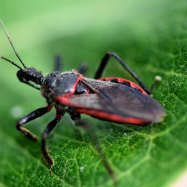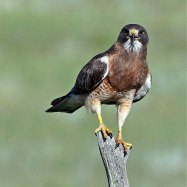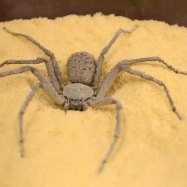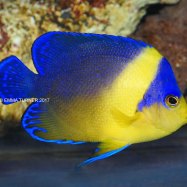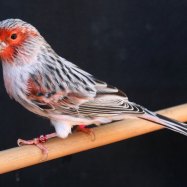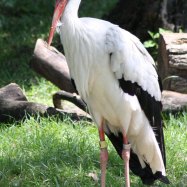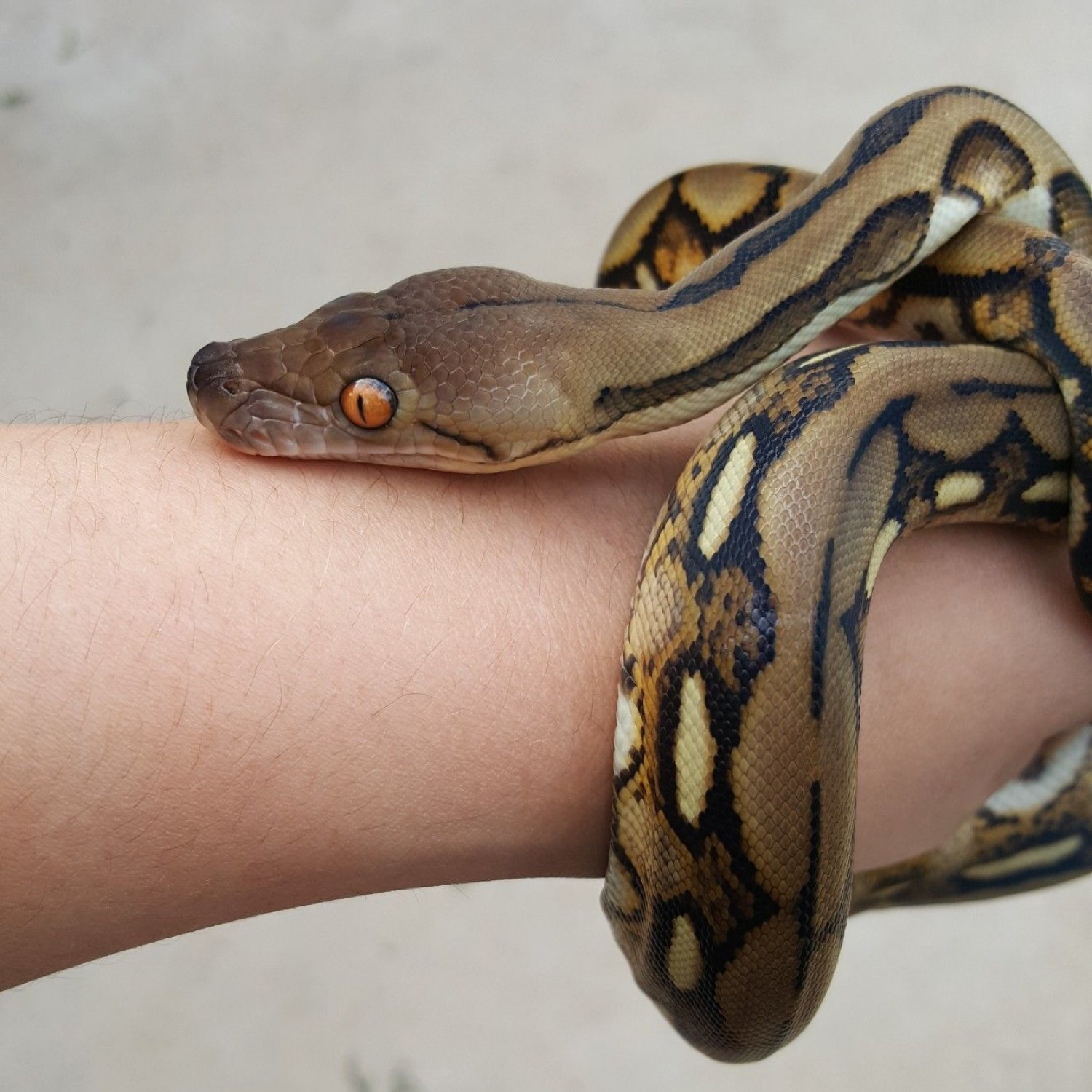
Reticulated Python
Adults can reach lengths of up to 20 feet (6 meters), although most individuals are between 10 and 15 feet (3 to 4.5 meters) in length.
Meet the Reticulated Python, a majestic snake found in Southeast Asia. With lengths of up to 20 feet, it is one of the longest snake species. Their striking body patterns make them a sought after pet, but beware, they are powerful constrictors. #ReticulatedPython #SoutheastAsia #Snake
Animal Details Summary:
Common Name: Reticulated Python
Kingdom: Animalia
Habitat: Tropical rainforests, woodlands, grasslands, and swamps
The Mighty Reticulated Python: A Fascinating Creature of Southeast Asia
The tropical rainforests of Southeast Asia are home to some of the most diverse and fascinating creatures on the planet. Among them, the Reticulated Python stands out as one of the most impressive and captivating animals that call this region home.Known scientifically as Python reticulatus, and commonly referred to as Reticulated Python, this reptile is a member of the Animalia kingdom and Chordata phylum, belonging to the Reptilia class and Squamata order. It is part of the Pythonidae family, a group that includes some of the largest snakes in the world Reticulated Python.
In this article, we will dive into the world of Reticulated Pythons, exploring their habitat, feeding methods, physical attributes, geographical distribution, and more. So, buckle up and get ready to learn all about this impressive creature.
Habitat and Distribution
Reticulated Pythons are widely distributed throughout Southeast Asia, making their homes in countries such as Indonesia, Malaysia, and the Philippines. They can also be found on the islands of Sumatra, Borneo, and Sulawesi.These snakes are incredibly adaptable and can survive in a variety of habitats, including tropical rainforests, woodlands, grasslands, and swamps. However, they are most commonly found in tropical rainforests, where they can take advantage of the dense vegetation for hunting and hiding.
Interestingly, Reticulated Pythons are also known to venture into urban areas, with sightings reported in cities such as Singapore. This adaptability to different environments makes them a formidable and resilient species.
Feeding Method
Like most snakes, Reticulated Pythons are carnivorous, meaning they primarily feed on other animals Redback Spider. These snakes are apex predators, and their diet mainly consists of mammals, such as rodents, deer, and pigs, and birds, including chickens and pheasants.Reticulated Pythons kill their prey by constriction, coiling around their target and squeezing until the animal suffocates. They have incredibly powerful muscles and can exert an enormous amount of force, making them deadly hunters.
These pythons are also known to be opportunistic feeders, meaning they will eat whatever prey is available, making them adaptable to changes in their environment.
Physical Attributes
One of the most striking features of the Reticulated Python is its coloration. These snakes have a beautiful reticulated pattern on their scales, with a combination of black, brown, and yellow colors that give them a unique and eye-catching appearance.Their bodies are long and slender, with a muscular build that allows them to move quickly and with precision. Their heads are noticeably larger than their bodies, with small, beady eyes that give them excellent vision.
Size and Growth
Reticulated Pythons are one of the largest snakes in the world, with adults reaching lengths of up to 20 feet (6 meters). However, most individuals are between 10 and 15 feet (3 to 4.5 meters) in length.These snakes are also known for their impressive growth rate. Baby Reticulated Pythons hatch from eggs that are approximately 2 inches long, and within a year, they can reach lengths of up to 8 feet (2.4 meters). As they continue to grow, their growth rate slows down, but they can still reach impressive lengths.
Threats and Conservation
Although Reticulated Pythons are not currently classified as an endangered species, they do face some threats in the wild. Habitat loss due to deforestation is a significant concern, as their natural habitats continue to diminish. They are also hunted for their beautiful skins, which are used to make luxury items such as handbags and shoes.Fortunately, many organizations and conservation efforts are in place to protect these remarkable creatures. One example is the Reticulated Python Conservation Project, which works to conserve and study these pythons and their habitats in Indonesia.
Fascinating Facts
- Reticulated Pythons are excellent swimmers and have been spotted crossing large bodies of water, such as rivers and lakes.- These pythons are excellent climbers, using their strong bodies and sharp claws to navigate trees and other obstacles.
- Unlike other snake species, Reticulated Pythons are oviparous, meaning they lay eggs to reproduce. Females can lay clutches of up to 30 eggs at a time.
- These snakes are solitary creatures and are only known to come together during breeding season or when competing for food.
- Reticulated Pythons have prehensile tails, which means they can use them to hold onto branches and stabilize themselves when climbing.
In Conclusion
The Reticulated Python is a remarkable creature, with its size, strength, and adaptability making it one of the most impressive reptiles in the world. From its beautiful coloration to its unique hunting methods, there is no denying the awe-inspiring nature of these snakes.As we continue to learn more about these animals and their habitats, it is essential to remember the importance of conservation efforts. By protecting these creatures and their environments, we can ensure that future generations will have the opportunity to witness the wonder of the Reticulated Python.

Reticulated Python
Animal Details Reticulated Python - Scientific Name: Python reticulatus
- Category: Animals R
- Scientific Name: Python reticulatus
- Common Name: Reticulated Python
- Kingdom: Animalia
- Phylum: Chordata
- Class: Reptilia
- Order: Squamata
- Family: Pythonidae
- Habitat: Tropical rainforests, woodlands, grasslands, and swamps
- Feeding Method: Carnivorous
- Geographical Distribution: Southeast Asia
- Country of Origin: Indonesia
- Location: Reticulated Pythons are native to Southeast Asia, including countries such as Indonesia, Malaysia, and the Philippines.
- Animal Coloration: The coloration of Reticulated Pythons varies, but they typically have a combination of black, brown, and yellow scales arranged in a reticulated pattern.
- Body Shape: Reticulated Pythons have a long, slender body with a muscular build and a prominent head.
- Length: Adults can reach lengths of up to 20 feet (6 meters), although most individuals are between 10 and 15 feet (3 to 4.5 meters) in length.
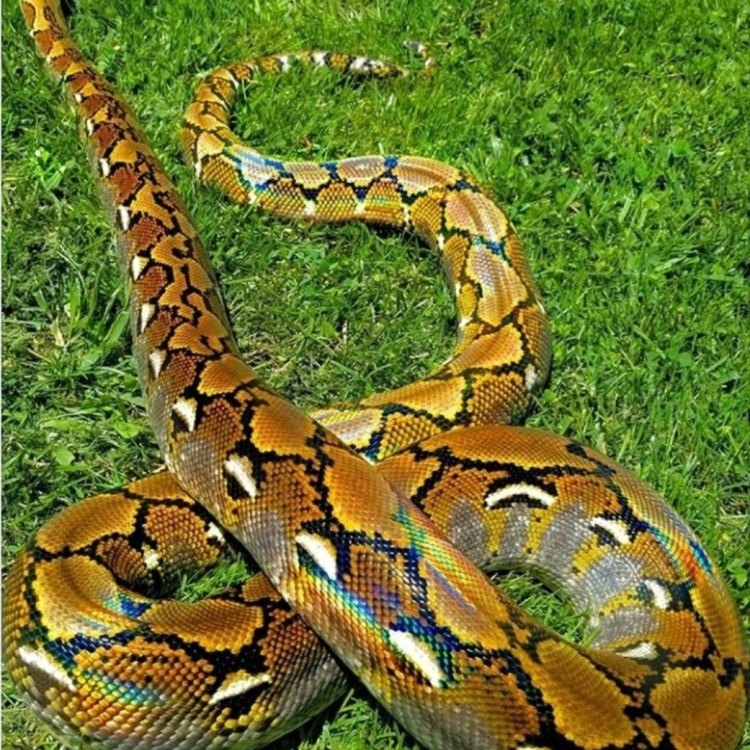
Reticulated Python
- Adult Size: The average adult size of a Reticulated Python is around 10 to 20 feet (3 to 6 meters) in length and weighs between 60 and 160 pounds (27 to 73 kilograms).
- Average Lifespan: Reticulated Pythons have an average lifespan of about 15 to 20 years in the wild, although some individuals in captivity have been known to live up to 30 years.
- Reproduction: Reticulated Pythons are oviparous, meaning they lay eggs.
- Reproductive Behavior: During breeding season, male Reticulated Pythons will locate a female by following her scent trail. They will engage in courtship behaviors such as rubbing against the female's body and intertwining their tails.
- Sound or Call: Reticulated Pythons are not known to make any vocalizations.
- Migration Pattern: Reticulated Pythons do not exhibit long-distance migrations, but they may move between different habitats in search of food or mates.
- Social Groups: Reticulated Pythons are solitary animals and do not form social groups.
- Behavior: Reticulated Pythons are nocturnal and primarily active at night. They are excellent swimmers and climbers, allowing them to access a wide range of habitats.
- Threats: The main threats to Reticulated Pythons include habitat loss and degradation, hunting for their skin, and capture for the exotic pet trade.
- Conservation Status: The Reticulated Python is listed as a species of least concern by the IUCN Red List.
- Impact on Ecosystem: As apex predators, Reticulated Pythons play a crucial role in controlling the populations of their prey species.
- Human Use: Reticulated Pythons are sometimes kept as pets. Their skin is also used in the production of luxury fashion items such as handbags and belts.
- Distinctive Features: Reticulated Pythons have a distinctive pattern of interconnected scales that gives them their name. They also have sharp teeth and a muscular body for capturing and constricting prey.
- Interesting Facts: 1. Reticulated Pythons are one of the longest snake species in the world. 2. They are skilled climbers and can climb trees to ambush their prey. 3. Reticulated Pythons have been known to eat small deer and pigs. 4. They have heat-sensing pits on their lips, which help them locate warm-blooded prey.
- Predator: As adults, Reticulated Pythons are apex predators and have no natural predators.
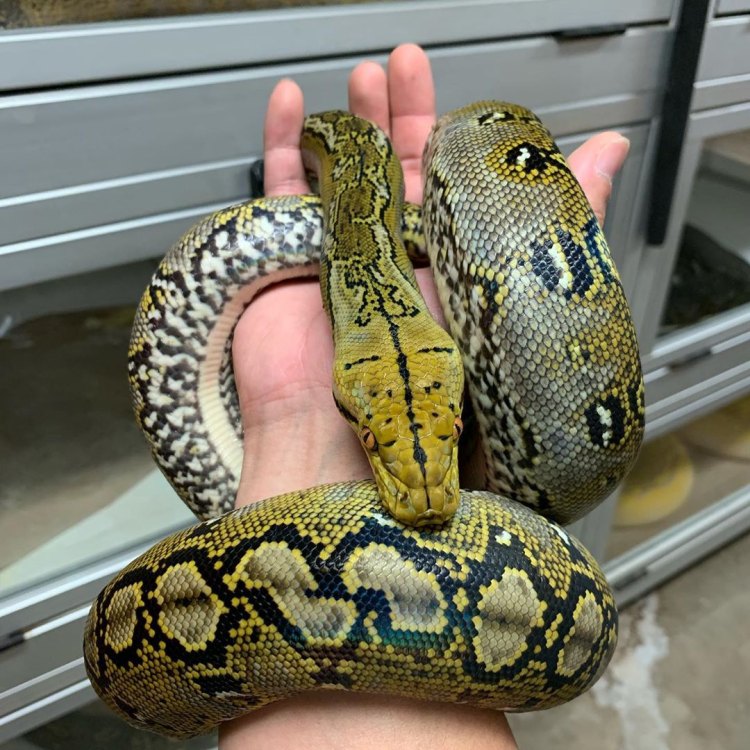
Python reticulatus
The Majestic Reticulated Python: A Legend Among Serpents
The world of reptiles is vast and diverse, with each species possessing unique features and behaviors that capture our fascination. One such creature that has spellbound humans for centuries is the Reticulated Python. With its impressive adult size, intimidating hunting style, and distinctive features, this snake has taken on a legendary status in the animal kingdom. In this article, we will dive deep into the world of the Reticulated Python, exploring its physical traits, behaviors, and impact on the ecosystem PeaceOfAnimals.Com.Adult Size and Average Lifespan
The Reticulated Python, also known as Python reticulatus, is native to Southeast Asia, including Indonesia, the Philippines, and neighboring countries. It is also found in parts of India and tropical regions of Australia. As one of the largest snake species in the world, the Reticulated Python can grow to an astonishing 10 to 20 feet (3 to 6 meters) in length and can weigh between 60 to 160 pounds (27 to 73 kilograms). Some specimens have even been recorded to exceed 30 feet in length, making them one of the longest snake species known to date.
In the wild, Reticulated Pythons have an average lifespan of 15 to 20 years, although some individuals in captivity have been known to live up to 30 years. This longevity is due to their large size, which makes them less vulnerable to predators and allows them to thrive in their natural habitat.
Reproduction and Courtship Behaviors
Reticulated Pythons are oviparous, meaning they lay eggs. Mating usually occurs during the dry season, which varies depending on the species' location. During this time, male Reticulated Pythons will search for a female by following her scent trail Rooster. Once they locate a potential mate, they will engage in courtship behaviors such as rubbing against the female's body and intertwining their tails, which can last several weeks.
Sound or Call and Migration Pattern
While many snake species use vocalizations to communicate, the Reticulated Python is not known to make any sounds or calls. Instead, they rely on their powerful sense of smell to locate prey and potential mates.
Reticulated Pythons do not exhibit long-distance migrations like some other snake species. They are primarily sedentary creatures but may move between different habitats in search of food or mates, especially during the breeding season. However, they are known to travel great distances by climbing trees and swimming in rivers and creeks.
Social Groups and Behavior
Reticulated Pythons are solitary animals and do not form social groups. They lead a solitary life and only come together during mating season. As nocturnal creatures, they are primarily active at night, using their sharp eyesight, smell, and heat-sensing pits to hunt for prey. Their excellent swimming and climbing abilities also allow them to access a wide range of habitats, including rainforests, grasslands, and farmlands.
Threats and Conservation Status
As with many other wildlife species, the Reticulated Python faces numerous threats. The conversion of natural habitats into urban and agricultural areas has significantly affected their population. Additionally, they are hunted for their skin, which is used to produce luxury fashion items such as handbags and belts, and they are often captured for the exotic pet trade.
Thankfully, the Reticulated Python is listed as a species of least concern by the International Union for Conservation of Nature's Red List (IUCN). However, continuous habitat loss and poaching remain major concerns for their conservation.
Impact on Ecosystem and Human Use
As apex predators, Reticulated Pythons play a crucial role in controlling the populations of their prey species. By keeping their numbers in check, they help maintain the balance of the ecosystem. They also have a significant influence on the population dynamics of other predators that compete for the same resources.
Reticulated Pythons are sometimes kept as pets, although this practice is not recommended for inexperienced owners due to their large size and predatory nature. Additionally, their skin is often used in the production of luxury fashion items, which has contributed to their decline in the wild.
Distinctive Features and Interesting Facts
One of the most distinctive features of the Reticulated Python is its pattern of interconnected scales that give it its name. This intricate, complex pattern is unique to each individual and serves as camouflage in its natural habitat. They also have sharp teeth and a muscular body for capturing and constricting their prey.
In addition to their impressive size and distinct appearance, Reticulated Pythons have several interesting facts that make them stand out in the world of reptiles. Here are some fascinating facts about this legendary snake:
1. Lengthy Legends: As mentioned earlier, Reticulated Pythons are one of the longest snake species in the world, with the potential to reach over 30 feet in length.
2. Skilled Climbers: Reticulated Pythons are equally skilled climbers as they are swimmers. They use their powerful muscles and sharp claws to climb trees and even hunt from above.
3. Big Appetite: Reticulated Pythons are known for their big appetite and have been observed to eat a variety of prey, including small deer and pigs.
4. Heat-Seeking Skills: Reticulated Pythons have heat-sensing pits on their lips, which help them locate warm-blooded prey, making them incredibly efficient hunters.
Predators and Human-Elephant Conflict
As apex predators, adult Reticulated Pythons have no natural predators. Their excellent camouflage, powerful constriction, and superior hunting skills make them a formidable predator in their natural habitat. However, younger Reticulated Pythons may fall prey to birds of prey, large monitor lizards, and other snakes.
One of the most significant threats to Reticulated Pythons is human-elephant conflict. This occurs when elephants raid farms and villages in search of food, destroying crops and damaging property. In response, humans often retaliate by killing these magnificent creatures, leaving their carcasses behind. Reticulated Pythons, being opportunistic feeders, are quick to take advantage of this easy meal, leading to the belief that they actively hunt and kill elephants. However, there is no scientific evidence to support this claim, and it is a human-made myth that has contributed to the persecution of these snakes.
In conclusion, the Reticulated Python is an awe-inspiring species that has captured the imagination of humans for centuries. With its impressive size, incredible hunting skills, and unique features, it has earned a rightful place in the animal kingdom. However, their survival is under threat, and it is our responsibility to ensure that these majestic creatures continue to thrive in their natural habitat. Let us appreciate and protect the Reticulated Python for future generations to marvel at its legendary existence.
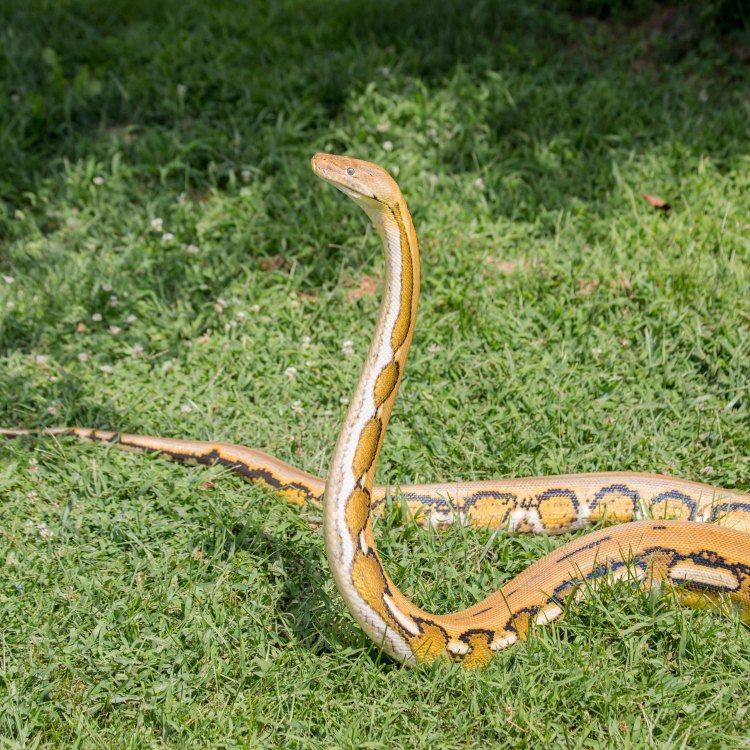
The Mighty Reticulated Python: A Fascinating Creature of Southeast Asia
Disclaimer: The content provided is for informational purposes only. We cannot guarantee the accuracy of the information on this page 100%. All information provided here may change without prior notice.




